MYSURU
Historical Palace
Chamundeshwari Temple
The Chamundeshwari Temple is a Hindu temple located on the top of Chamundi Hills about 13 km from the palace city of Mysore in the state of Karnataka in India. The temple was named after Chamundeshwari or Durga, the fierce form of Shakti, a tutelary deity held in reverence for centuries by Mysore Maharajas. Chamundeshwari is called by the people of Karnataka as Naada Devathe which means State Goddess.
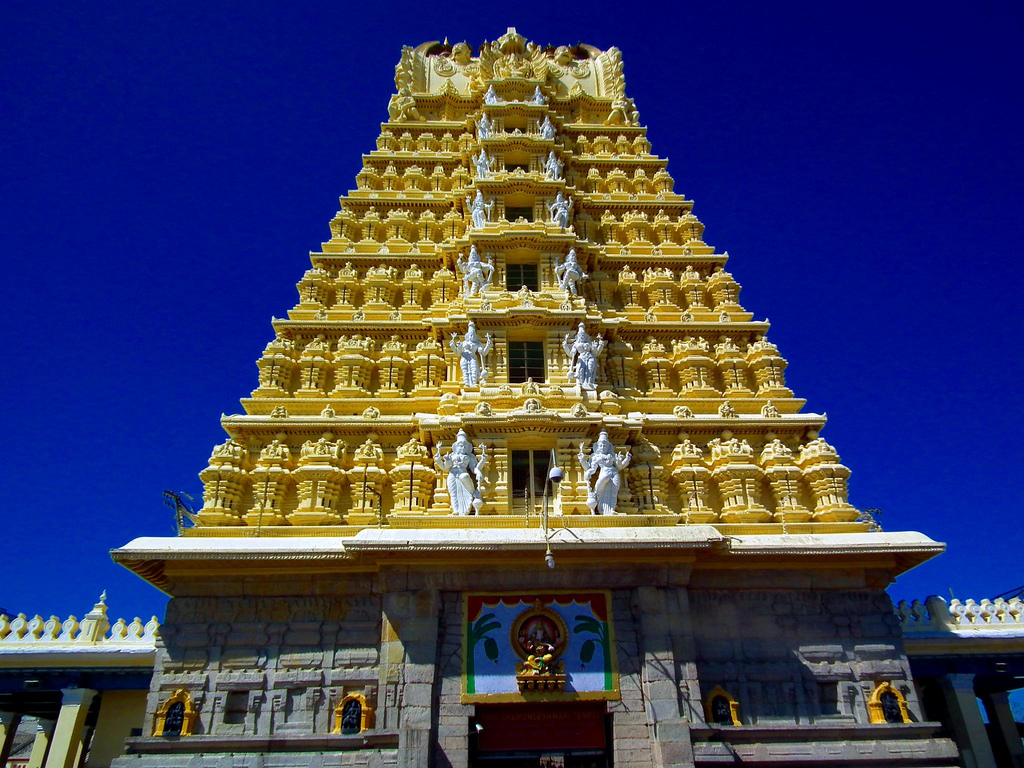
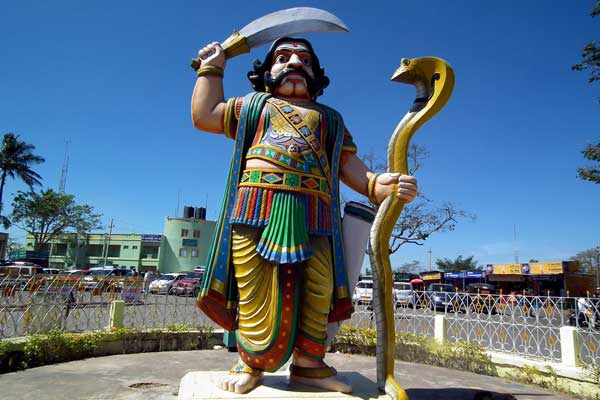
Mahishasura Statue
A short scenic drive of about 12km from Mysuru takes one along the Chamundi Hills at the head of which lies the Sri Chamundeshwari Temple with a fine gopuram (temple steeple).Do not get inveigled by the several viewpoints offering telescopic viewing along the route which are tourist traps. At the entrance of the temple grounds you are jolted by a fearsome larger than life sculpture of the Demon Mahishasura ,holding a machete in the right and cobra in the left hands,who was despatched in a showdown with Goddess Chamundeshwari who is also called Mahishasura Mardini for that reason.The 2000-year old temple and deity are dedicated to the patron goddess of the royal family.
Sri Nandi Temple
This giant image of Nandi (Bull) is located at the top of Chamundi hills in Mysore. More than 350 years old, this is one of the oldest icons in Mysore. According to Hindu mythology Nandi is considered as the vehicle (mount) of Lord Shiva, the lord of destruction. In front of every Shiva temple, on the court facing the shrine, you can see the image of a Nandi. About 16 feet in height and 24 feet long, this Nandi atop the Chamundi Hills is the third largest in India. The creation of this colossal image is attributed to Dodda Devaraja Wodeyar (1659–1673) on of the illustrious Maharajas of Mysore. It is the same maharaja who also commissioned the 1000 stepped stairway to the hilltop.
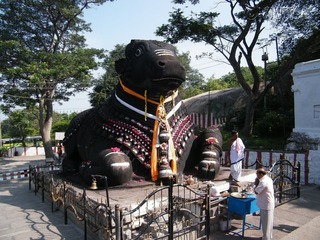
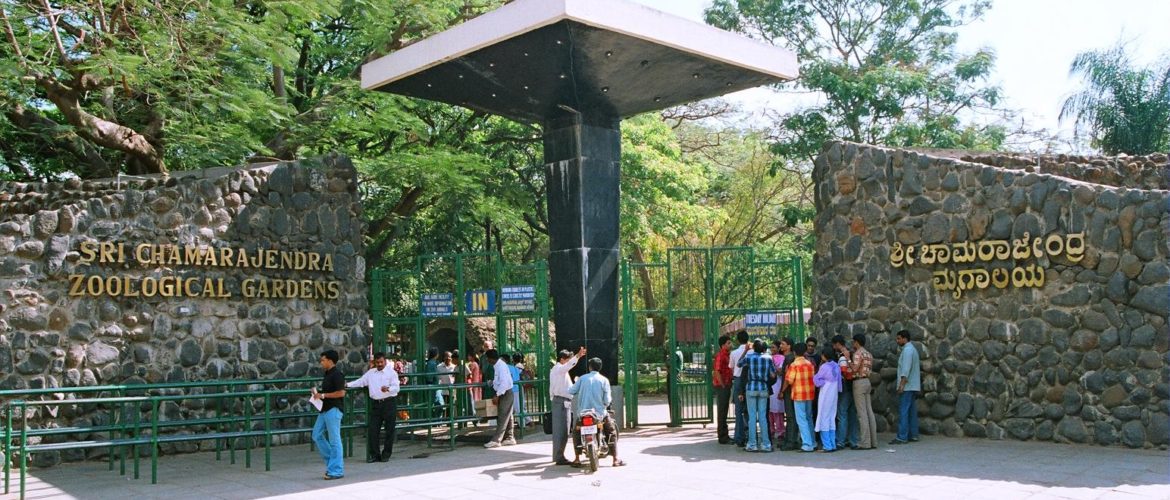
Mysore Zoo
Mysore Zoo (Now Mysuru Zoo) (officially the Sri Chamarajendra Zoological Gardens) is a 157-acre (64 ha) zoo located near the palace in Mysore, India. It is one of the oldest and most popular zoos in India, and is home to a wide range of species (168). Mysore Zoo is one of the city’s most popular attractions. While mainly depending on entry fees for its financing, an adoption scheme introduced in the early 2000s has been a success. Celebrities, institutions,animal lovers and Volunteers of various clubs in the zoo have contributed directly to the welfare of the zoo inmates.
Karanji Lake
Karanji Lake is a lake located in the city of Mysore in the state of Karnataka, India. The lake is surrounded by a nature park consisting of a butterfly park and a walk-through aviary. This aviary is the biggest 'walk-through aviary' in India. There is also a museum, the Regional Museum of Natural History which is located on the banks of this lake. The total area of Karanji lake is 90 hectares. While waterspread area is about 55 hectares, the foreshore area measures about 35 hectares. Karanji lake is owned by the Mysore Zoo Authority. Mysore Zoo gets a revenue of an average of Rs. 50000 per day from ticket sales to enthusiasts who visit this lake
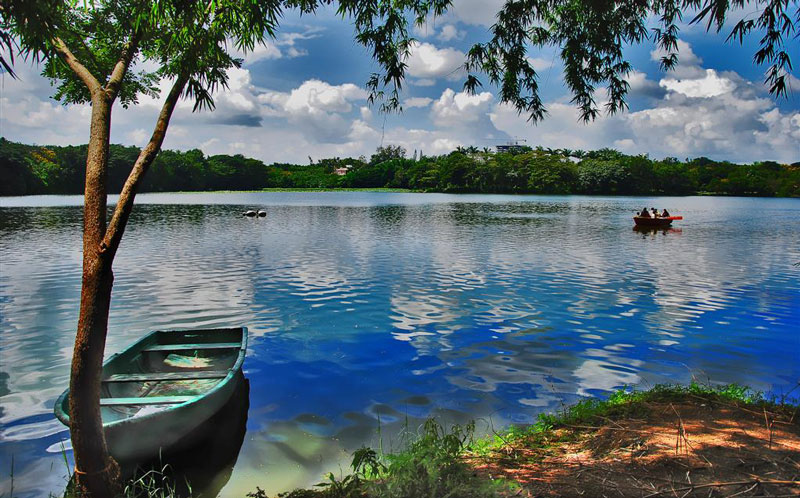
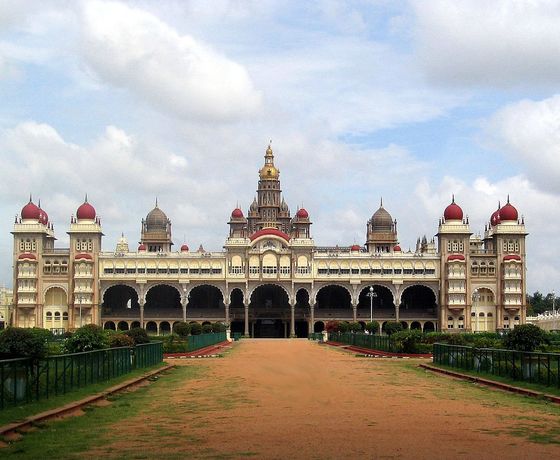
Mysore Palace
Mysore (or Mysuru), a city in India's southwestern Karnataka state, was the capital of the Kingdom of Mysore from 1399 to 1947. In its center is opulent Mysore Palace, seat of the former ruling Wodeyar dynasty. The palace blends Hindu, Islamic, Gothic and Rajput styles. Mysore is also home to the centuries-old Devaraja Market, filled with spices, silk and sandalwood.The Jaganmohan Palace, a Wodeyar structure in traditional Hindu style, displays an extensive collection of South Indian art. St. Philomena's Church is a grand, Neo-Gothic-style Catholic church featuring 53m-tall twin spires. Standing atop Chamundi Hills outside the city, Chamundeshwari Temple is an intricate Hindu shrine believed to date back to the 12th century. At the base of Chamundi Hills , picturesque Karanji Lake is a habitat for numerous bird species. Further afield, Brindavan Gardens offers a vast spread of landscaped gardens, blooms and trees, as well as a boating lake and a musical fountain.
Jaganmohan Palace
Jaganmohan Palace is a palace in the princely city of Mysore, India. Its construction was completed in 1861 and was initially used by the Wodeyars, kings of Mysore as their home. It is now converted into an art gallery and a function hall. Till the new palace was completed in 1912, the Jaganmohan Palace was used by the royals as their home. In 1902, the king Rajarshi Nalvadi Krishnaraja Wodeyar was installed to the Mysore throne, in a ceremony that took place in a pavilion inside the Jaganmohan Palace.
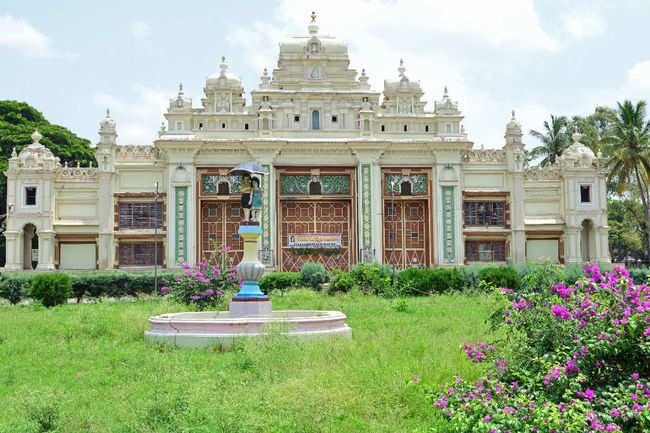
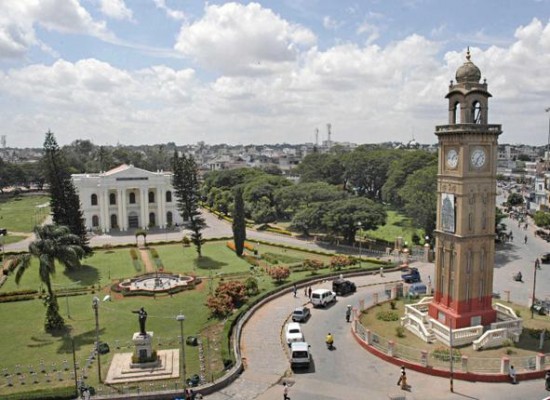
Big Clock Tower
Silver Jubilee Clock Tower is seen on the northern side of main palace at Gandhi Square and Town Hall in Mysore. It was built in 1927 to celebrate the 25 years completed rule of Maharaja Krishnaraja Wadeyar IV. Its cost of construction was shared by the staff working in palace as a mark of their respectful love and affection to the popular King. It is well known by common man as ‘Doddagadiyara’ (big clock) because comparatively there is another "small clock" named as Dufferin Clock Tower located near KR Circle, widely known as ‘Chikkagadiyara’. Silver Jubilee Clock Tower stands tall in busy area adjacent to Chamaraja Circle and Town Hall, from where commercially busy streets Ashoka Road and Harsha Road connect along the park lane. The area is known as Nazarbad in Mysore city and surrounded by circular enclosure which is always jam-packed with busy vehicular traffic and buyers and sellers.
St. Philomena's Cathedral
St. Joseph's Cathedral is a Catholic church that is the cathedral of the Diocese of Mysore, India. The full name is the Cathedral of St. Joseph and St. Philomena. It is also known as St. Joseph's Cathedral. It was constructed in 1936 using a Neo Gothic style and its architecture was inspired by the Cologne Cathedral in Germany. This is one of the tallest churches in Asia.
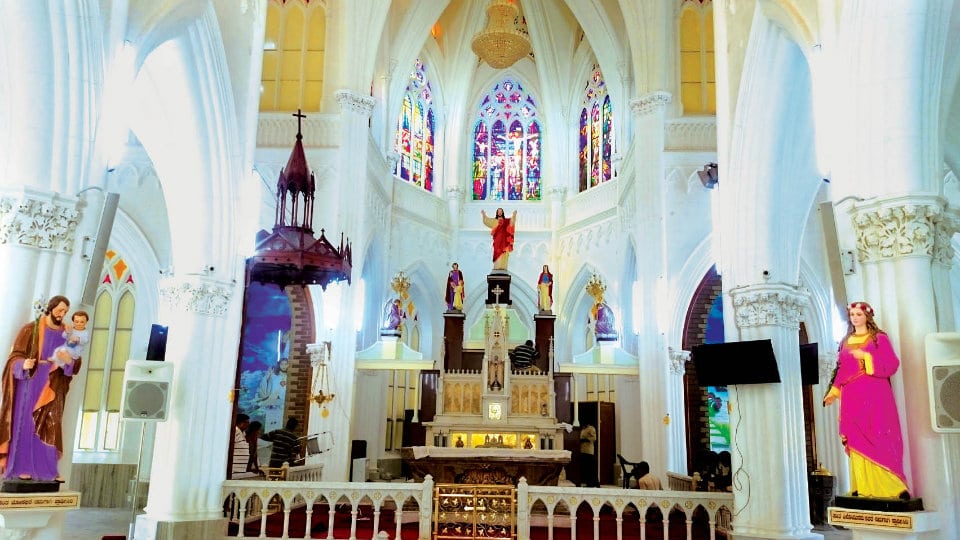
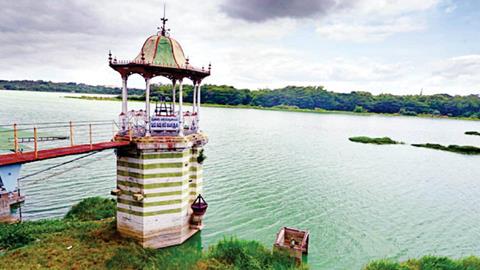
Kukkarahalli Lake
Kukkarahalli Lake also called Kukkarhalli Kere (Lake is ‘’kere’’ in local Kannada language), located in the heart of the Mysore city, adjoins the Manasgangotri (University of Mysore), the Kalamandir (Rangyana) and the Central Food Technological Research Institute (CFTRI) campus (separated by the Hunsur Road). It provides lung-space to the city. Mummadi Krishnaraja Wodeyar, (1794–1868) of the Mysore Dynasty (Kingdom of Mysore) was responsible for getting the lake created, in the year 1864, to provide water for irrigation to about 4000 ha (10,000 acres) of land outside the city. The Lake also used to be a source of water supply to the city of Mysore but over the years.
